Discover the power of AI tools for UX designers, revolutionizing the design process with previews and prototyping.
The User Experience design area has seen massive modifications throughout the years, particularly between 2022 and 2023. Designers have a wealth of design tools at their disposal. These top AI tools for UX designers provide a preview of the ultimate outcome at each phase, resulting in less work and more output. These include AI-based Prototyping tools, which allow a designer to speed up the design process while simultaneously making it more effective by verifying it at each step.
Designers may automate the entire process by incorporating AI into their work. Whether it’s generating layouts or building templates, these AI-enabled UI/UX tools can make every step of the design process much more productive.
ChatGPT has lately taken off, paving the way for a plethora of AI technologies. I believe that many designers will begin to take advantage of these tools and utilize them to improve their productivity. Designers can produce things rapidly and effectively with simple AI tools, easing their duties! AI in UI/UX design may be used to customize goods, employ predictive analytics, create chatbots using natural language processing, and detect photos and videos to improve graphics. It offers several advantages, such as enhanced user experiences, faster dynamic design cycles, data-driven design decisions, and possible cost savings by automating chores.
AI Tools For UX Designers to make your work stand out:
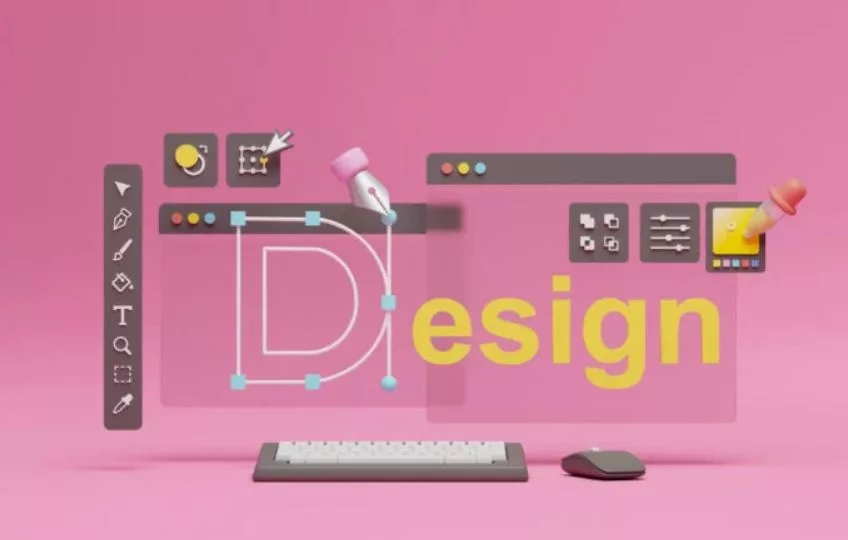
1. Visily
Having used other AI wireframing and prototyping tools over my UX journey, I discovered Visily to be the best contender for a quick and straightforward approach to developing apps! My preference for this over competitors is due to its fantastic component library for a ‘head-start’ in design — but this is nothing compared to its AI transformation of sketches and screenshots from any source (Dribble, Google Images…) straight into editable mockups; every designer should give this one a try!
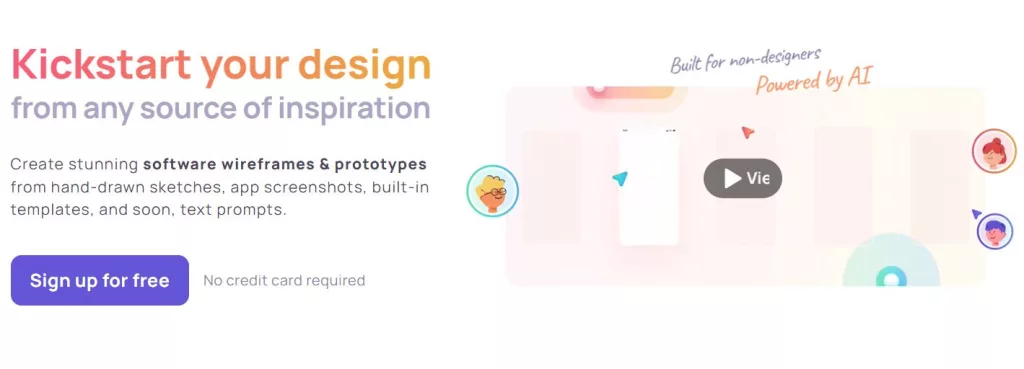
2. Uizard
Uizard, a widely used platform, trains a computer to comprehend graphical user interfaces in the same manner that humans do. Designers may use AI to develop native mobile applications immediately from a drawing. It not only automates the design process but also creates code from the drawing. Uizard is one of the excellent AI tools for UX Designers for testing design and flows with users.

Discover game-changing AI tools for UX Designers with Uizard
3. Attention Insight
Attention insight demonstrates AI-powered design analytics for increased conversion, improved product performance, and user-centric design. It is an excellent tool for identifying website usability issues and understanding what features consumers notice when they visit your website.
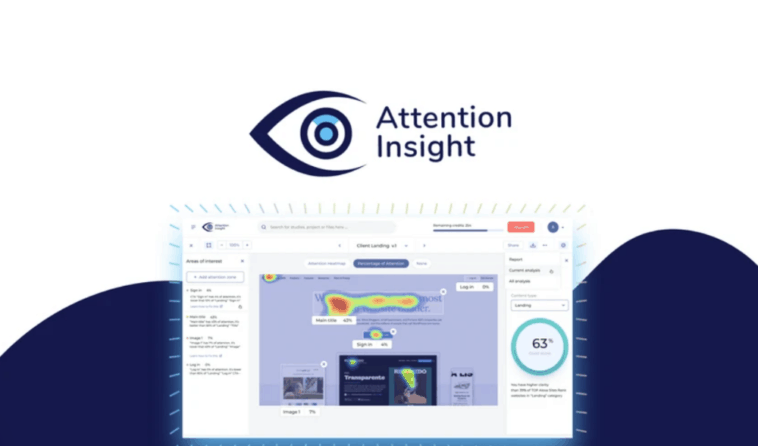
4. Chat GPT
Chat GPT is a versatile tool that may help designers in a variety of ways. Its capacity to produce content-based text prompts may assist designers in a variety of ways, including giving design inspiration, producing ideas for user research, and providing accessibility solutions. ChatGPT may also help UX designers create compelling and user-friendly content for digital goods. This includes copywriting for user interfaces, product descriptions, coachmaker, and so on. Designers may utilize the tool to produce content that is both instructive and interesting, therefore improving the entire user experience.
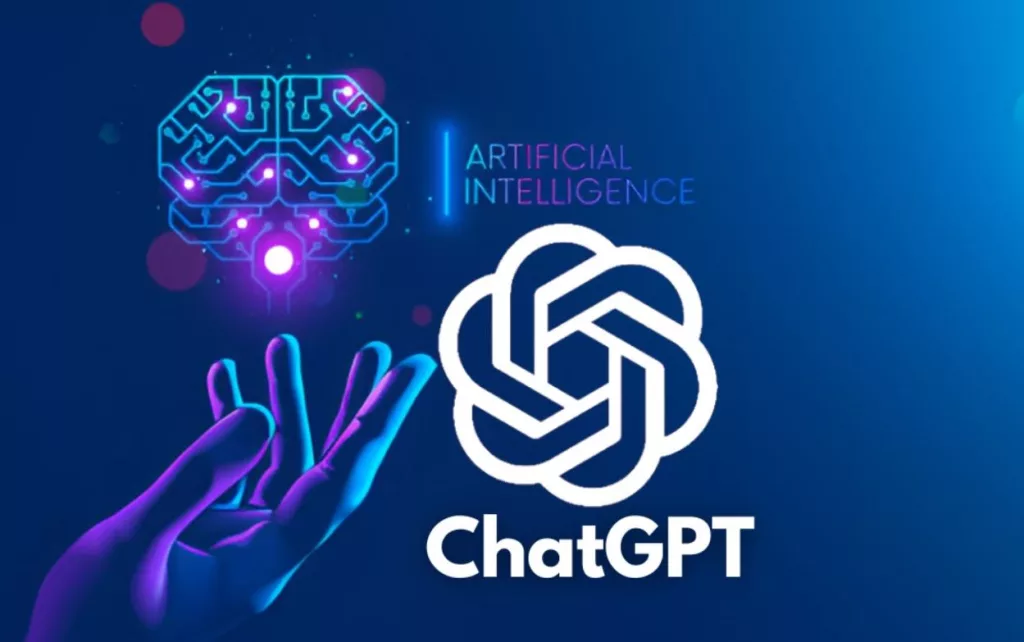
AI tools for UX Designers: Empower your creativity with Chat GPT
5. Let’s Enhance
Let’s Enhance is a sophisticated AI tool for UX Designers that enables them to improve picture resolution without sacrificing image quality. The entire procedure is completely automated and rapid. Images may be upscaled up to 16x without losing quality. Let’s Enhance makes it so much easy to improve images. This program allows designers to achieve high resolutions with completely automated processing.
You may also read:-Best Laptops for UX Designers In 2023
6. Khroma
Khroma is a cutting-edge colour tool designed for designers who want to make colour picking easier. Using just 50 of your favourite colours, Khroma’s AI system is trained to detect millions of other similar hues, resulting in an infinite number of colour pallet combinations. These colour palettes are deliberately arranged into themes like Text, Poster, Gradient, and Picture, providing users with colour schemes that are appropriate for frequent use-case scenarios. Designers may also test colour schemes on their original pictures, providing a more realistic portrayal of how the colour palettes would seem in real-life scenarios.
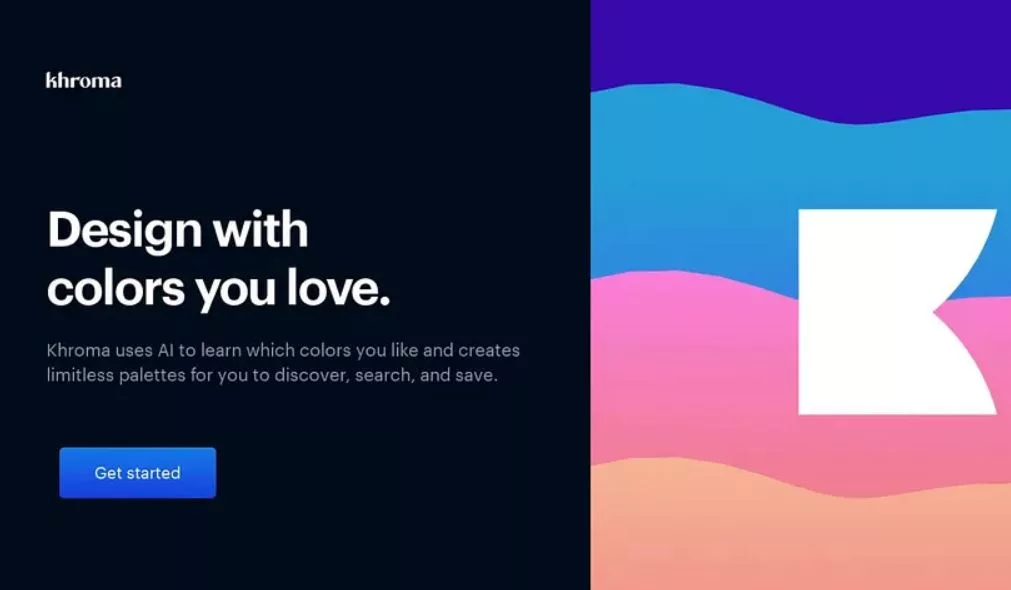
7. Balsamiq
When it comes to determining how their final product will appear, most designers choose simplicity. Balsamiq is a tool that can assist them in this regard. Most other prototype tools have incredibly elaborate and colourful interfaces, but the Balsamiq wireframe removes all of the clutter. It attempts to emulate the tactile sensation of drawing on a notepad or whiteboard on a computer. The most significant advantage of this tool is that it allows the designer to focus all of their work on the content initially, rather than style, colours, and so on, which can all be done afterwards.
8. InVision
InVision is currently one of the most frequently used prototype tools on the planet. Because of its advantages, InVision today has over 2 million users that utilize it to exhibit their designs. Indeed, this technology has acquired so much hold throughout the world that many experts believe it is one of the most difficult competitors Adobe Wireframe has encountered to date.
This program allows a designer to build and share clickable versions of their designs. They may then put these designs to the test and offer them to stakeholders or clients. That isn’t everything. InVision also allows designers to share their screens with other designers and collaborators, create animations and transitions, and interface with the majority of popular design tools like Sketch and Photoshop.
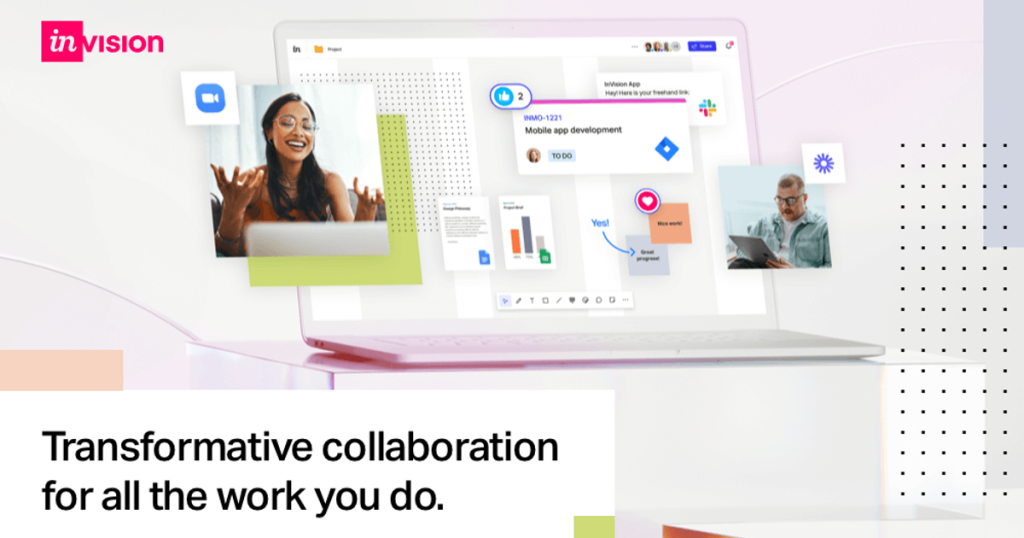
8. Mockplus
When it comes to a AI tools for UX Designers better utilize creativity, communication, material collecting, and decrease manual labour, Mockplus is one of the first things that comes to mind. Mockplus is essential for every designer in this AI-driven design age. This program assists designers in automating design and exporting design directly from platforms like Sketch, Photoshop, and Adobe XD. It also enables designers to examine specifications generated automatically and create interactive prototypes, which is incredibly useful.
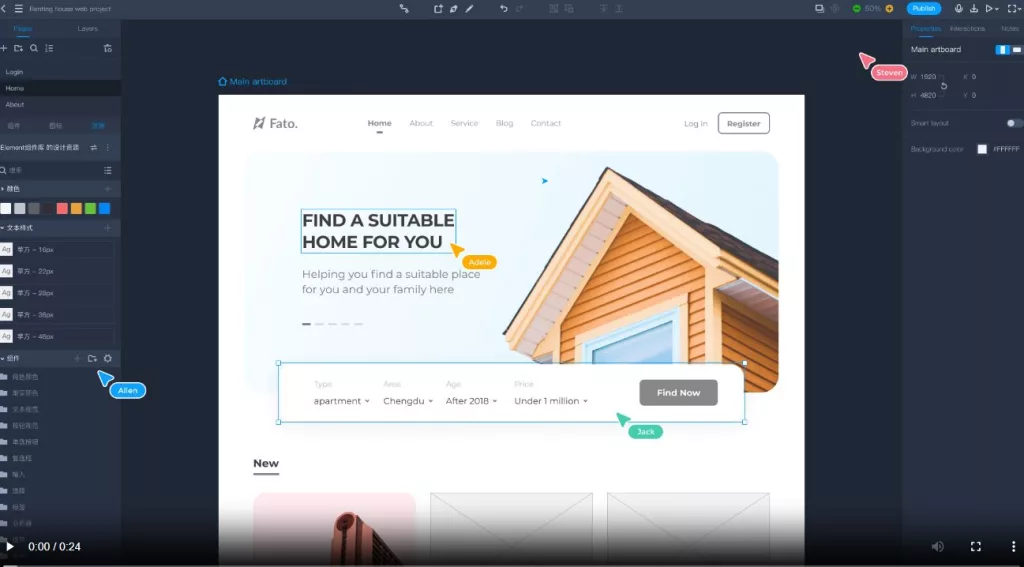
Conclusion
While AI technologies will never totally replace human emotions and the value that designers provide, they can certainly assist enhance what designers do by automating regular activities and allowing designers to find more time to be more productive and creative. All of these AI technologies are highly beneficial for designers to have in their toolboxes to develop the most effective and best versions of their ideas.
However, it is important to note that AI tools for UX Designers have limits as well, such as a lack of empathy and emotional intelligence, both of which are required for designers to comprehend audience preferences. Second, over-dependence on AI technologies may result in homogenized, predictable designs that are lacking in creativity.
AI tools for UX Designers, when utilized correctly, may be tremendous assets for UI UX design companies and designers. They may improve the design process and help designers produce more effective and powerful designs by freeing up time for designers to be more creative. Although the design domain is becoming more AI-driven, it will be difficult for a computer to understand the empathy and value that a design firm brings to the table.
AI technologies, on the other hand, may become designers’ greatest friends, allowing them to be more creative. As a result, we are making progress toward a future in which AI and humans may cohabit together. However, while the design domain is becoming more AI-driven, it will be difficult for a computer to comprehend the empathy and value that a design firm brings to the table. Our UI UX design services extend beyond the use of AI techniques. To offer extraordinary design solutions, we trust in the power of human creativity, intuition, and awareness of user demands.
Frequently Asked Questions about AI Tools For UX Designers
1. Are AI tools capable of completely replacing human designers?
No, AI tools cannot replace human designers entirely. While they can automate certain tasks and enhance productivity, human emotions, empathy, and creativity play a vital role in design. AI technologies should be seen as tools that assist designers rather than replace them.
2. How can AI tools benefit UI/UX designers?
AI tools offer several benefits to UI/UX designers. They can help designers produce content, generate design ideas, automate repetitive tasks, improve graphics, customize products, and make data-driven design decisions. These tools can enhance user experiences, accelerate design cycles, and potentially reduce costs by automating certain tasks.
3. What are the limitations of AI tools for UX Designers?
AI design tools have certain limitations. They lack empathy and emotional intelligence, which are crucial for understanding audience preferences. Over-reliance on AI technologies may also lead to predictable and homogenized designs that lack creativity. Human creativity, intuition, and understanding of user demands are essential in the design process.
4. Can AI tools replace the need for user testing and feedback?
While AI tools can provide valuable insights and analytics, they cannot replace the importance of user testing and feedback. User testing allows designers to gather firsthand feedback, understand user behaviour, and make improvements based on real user experiences. AI tools can complement user testing but should not be a substitute for it.
5. How can AI tools improve design productivity?
AI tools can enhance design productivity by automating repetitive tasks, generating design elements and code, providing design inspiration, and offering analytics for improved decision-making. By reducing the time spent on routine activities, designers can focus more on creative and strategic aspects of their work.
6. Are these AI tools suitable for all types of designers?
The mentioned AI tools cater to various design needs, from wireframing and prototyping to colour picking, image enhancement, and content creation. However, the suitability of these tools may vary depending on individual preferences, project requirements, and design workflows. Designers should explore and evaluate different tools to find the ones that best align with their specific needs.
7. How can AI and human designers coexist in the future?
AI and human designers can coexist by leveraging the strengths of both. While AI tools can automate certain tasks, analyze data, and offer efficiency, human designers bring emotions, empathy, creativity, and the ability to understand complex human needs. The future of design will likely involve a collaborative approach, where AI technologies assist designers in their work, allowing them to focus on higher-level thinking and innovation.
We hope you found this blog about AI Tools For UX Designers both informative and inspiring. Stay ahead in the world of UX design with these game-changing tools!











